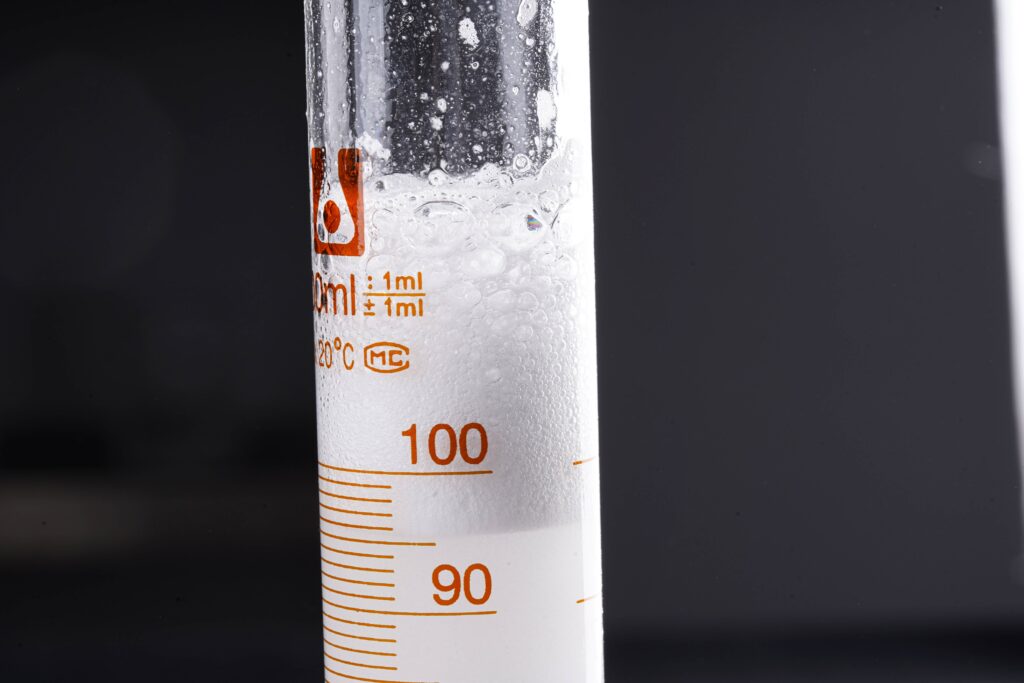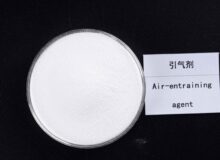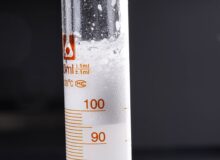Air entrainment agent for concrete
Air entrainment agent for concrete
The air-entraining agent is an admixture that can produce many uniformly distributed, stable, and closed micro-bubbles during the concrete mixing process, thereby improving the workability, frost resistance, and durability of concrete. The bubble is gas surrounded by a thin film of liquid.
Air-entraining agents can be divided into ionic and non-ionic types, and concrete air-entraining agents are mainly anionic.

New air-entraining agent—polyether ester
Polyether air-entraining agent is a surfactant mixture specially used for concrete to reduce tension and provide lubrication. It has strong foaming properties, fine foam, and long foam stabilization time. The bubbles burst in time to produce microgels that continue to react with the hydration products, so it has minimal impact on the strength. Compared with other rosin, soap locust, and ether air-entraining agents, the workability of concrete is better, the flow rate is increased, the pumping loss is slight, the slurry lifting performance is strong, and it has good compatibility with various materials such as cement and gypsum.
Performance & Features
- It can be used for air entrainment of various cement and gypsum-based building materials and is widely used in concrete and wet mortar.
- It is an anionic surfactant
- It is especially suitable for polycarboxylate water-reducing agent systems and has an excellent protective effect on the molecular structure of polycarboxylate water-reducing agents.
- It has rich foaming ability and good foam stabilizing performance, and the foam is uniform and stable.
- Excellent rheological controllability and workability over a wide pH and temperature range
Sodium alpha-olefin sulfonate
Sodium alpha-olefin sulfonate, a white crystalline powder, is an anionic surfactant easily soluble in water, ethanol, glycerin, and methanol. The pH value is stable in the range of 1 to 14. Its chemical formula is C3H3NaO3S. It is commonly used as an air-entraining agent in concrete.
Plays the following roles in concrete:
- Air-entraining effect: Introducing many evenly distributed micro-bubbles into mortar and concrete. It is mainly used to improve the workability and consistency of mortar and concrete, reduce bleeding and segregation, and significantly improve the durability of hardened mortar and concrete.
- Function of water-reducing agent: Sodium alkenyl sulfonate can react with cement to form a gel, improve the fluidity of concrete, reduce the viscosity of concrete, and improve the fluidity and permeability of concrete. Meanwhile, it can also effectively reduce the water-cement ratio, improve the strength, and reduce the amount and costs.
- 3. Function of reinforcing agent: Sodium alkenyl sulfonate can combine with active iron oxide and aluminum particles in cement to form spherical expanded particles, which can fill the concrete’s micropores and improve the concrete’s compactness and strength. At the same time, it can also improve the impermeability and durability of concrete and delay the age deformation of concrete.
In short, as a concrete admixture, sodium alkenyl sulfonate can improve the fluidity, impermeability, crack resistance, and strength of concrete and increase its durability and the service life of its components.
SDBS(sodium dodecyl benzene sulfonate)
Features: Compared with sodium dodecyl sulfate, it has better foam stability (related to the viscosity of the solution) and more vital degreasing ability but poor resistance to hard water and is used in synthetic detergents.
Production: Using propylene as raw material, first polymerized into propylene tetramer-dodecane, then copolymerized with benzene to form dodecylbenzene, sulfonated with fuming sulfuric acid into dodecylbenzene sulfonic acid, and then neutralized into sodium salt. That is polymerization-alkylation-sulfonation-saponification.
Lauryl sodium sulfate, trade name K12 or KAS-12
Features: good dispersion and foam performance, small, stable, and long-lasting foam, good emulsification and solubilization, especially excellent solubilization of Ca2+ salts, good biodegradability, alkali resistance, and hard water resistance, but in solid acid easy to decompose in solution.
Air entrainment process mechanism
The generation of bubbles – the stability of bubbles – the dissolution of bubbles
Effect of air-entraining agents on the performance of fresh concrete
- Increase concrete slump
When the air content increases by 1%, the slump increases by approximately 1cm;
The water reduction rate of the air-entraining agent can reach 7%-8%;
- Reduce bleeding
- Improve workability
- Condensation time
Since the dosage is minimal, it has little effect on the setting time of concrete.


